Artist Laura Greenan puts Parrish Hall center stage in this whimsical tribute to iconic concert posters of the 1960s.
Artist Laura Greenan puts Parrish Hall center stage in this whimsical tribute to iconic concert posters of the 1960s.
Naturally Connected
campbell
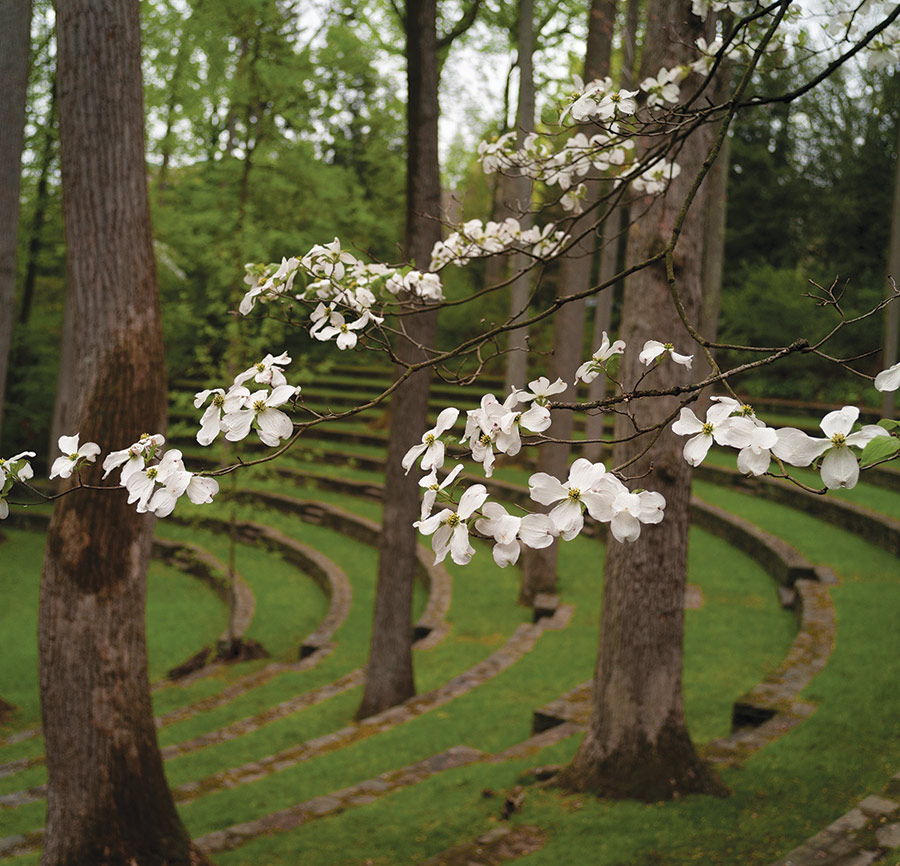
We then turn the dial to WSRN in “Silent No Longer” (pg. 40). The recent resurrection of its airwaves transmits this satisfying message: Radio is poised for a comeback on campus.
In “Forever Trending” (pg. 50), the Gregory Brothers of YouTube fame share their recipe for creating appetizing musical hits and how their Swarthmore bonds continue today. We’re also excited to spin a yarn about spiders in “Spider Senses” (pg. 42) and take you on a stroll with a dog, and confidant, in “Walking Martha” (pg. 46).
These features remind us of the importance of caring for the natural world and each other, two-footed, four-footed, eight-footed, even. After enjoying this splashy, spring-like bounty of stories from and about your fellow Swarthmoreans, take yourself outside and continue to commune — and communicate — with nature. It keeps us connected.
swarthmore college bulletin
Andy Hirsch
Director of Content Strategy
Mark Anskis
Editor
Kate Campbell
Senior Editor
Ryan Dougherty
Editorial Specialist
Nia King
Class Notes Editor
Heidi Hormel
Designer
Phillip Stern ’84
Photographer
Laurence Kesterson
Administrative Coordinator
Lauren McAloon
Editor Emerita
Maralyn Orbison Gillespie ’49
Email: bulletin@swarthmore.edu
Telephone: 610-328-8533
We welcome letters on articles covered in the magazine. We reserve the right to edit letters for length, clarity, and style. Views expressed in this magazine do not necessarily reflect the opinions of the editors or the official views or policies of the College. Read the full letters policy at swarthmore.edu/bulletin.
Send letters and story ideas to
bulletin@swarthmore.edu
Send address changes to
records@swarthmore.edu
The Swarthmore College Bulletin (ISSN 0888-2126), of which this is volume CXXIIII, number 2, is published in October, January, and May by Swarthmore College, 500 College Ave., Swarthmore, PA 19081-1390. Periodicals postage paid at Philadelphia, PA, and additional mailing offices. Permit No. 0530-620. Postmaster: Send address changes to Alumni Records, 500 College Ave., Swarthmore, PA 19081-1390.
Printed with agri-based inks.
Please recycle after reading.
©2023 Swarthmore College.
Printed in USA.

On Our Radar
Yes to Shepherd’s Pie!
—MARIAN F. BOCK ’80, Los Ranchos, N.M.
forks, spoons, and snow
—GEORGE C. ESKIN ’59, Santa Barbara, Calif.
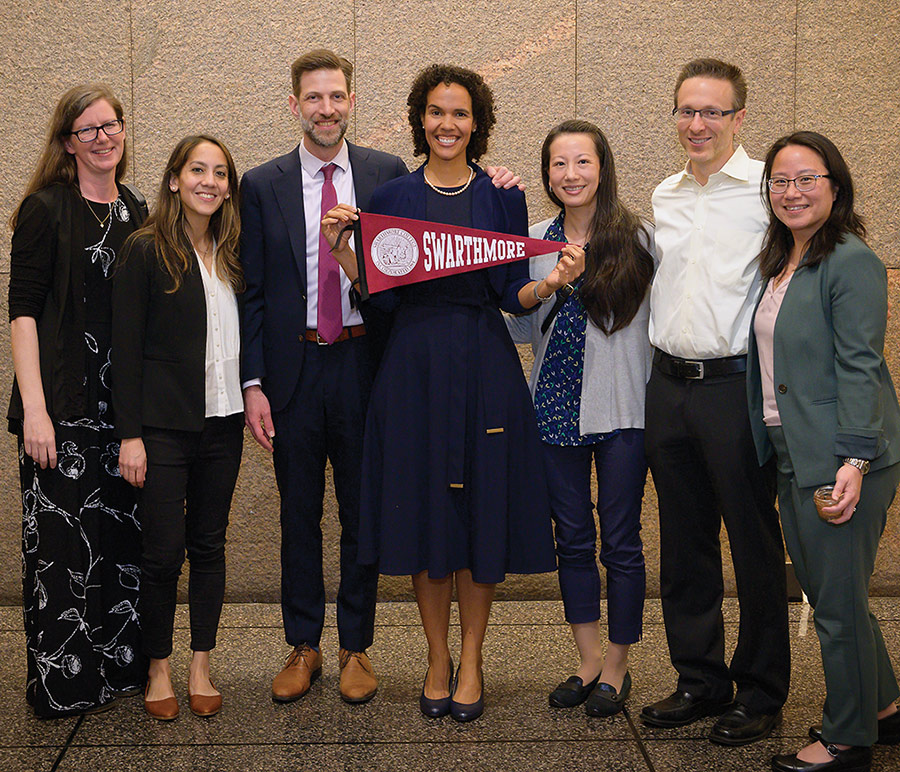
Incredibly Influential
—Peter Grambs ’79, Fairfield, Conn.
bending but not breaking
— RICHARD (DICK) GROSSMAN ’65, Bayfield, Colo.
the process shapes the scholar
—PETER B. MEYER ’65, New Hope, Pa.
daily walkers
—Patton Steuber ’68, Springfield, Pa.
Wild Life
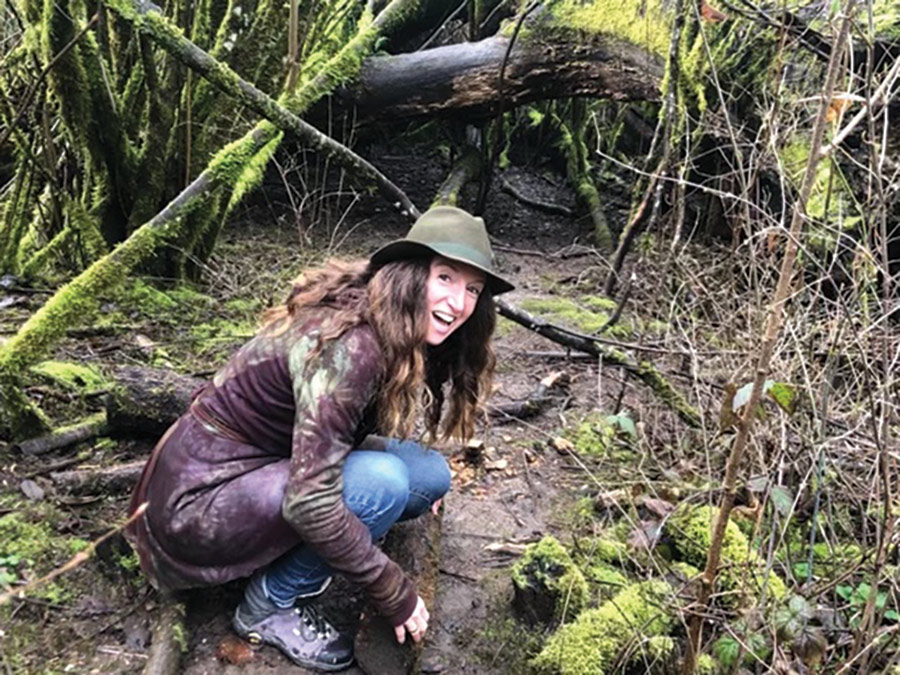
You may have heard (especially from paleo diet advocates) that your body and brain are remarkably similar to those of your hunter-gatherer forebearers. It’s just that the lifestyle you’ve grown up with doesn’t align with your biology.
Despite your 21st-century digital trappings, you are actually a bipedal social hominid who thrives outdoors collecting and preparing food in a tight-knit group. You evolved to range over the landscape, build simple tools and shelters, recount your tales, and dance your dreams around a collective fire. If it weren’t for your technological dependence and lack of training in a clan, you would excel at finding everything you need in nature.

studentwise: LET’S TANGO!
The recital followed a workshop and concert in March in which Sexteto Strapatta, which Ponvert founded, collaborated with the professional ensemble Abaddón.
HOT TYPE: New releases by Swarthmoreans
Christopher Lukas ’56
Carrying a Torch: And 24 Other Tales of Love, Lust & Loss
Stephen F. Austin State University Press

Christine “Tina” Shepardson ’94, Michael Penn, Scott Johnson, and Charles Stang
Invitation to Syriac Christianity
University of California Press

the East, Syriac Christians have generally been excluded from modern accounts of the faith. Collecting foundational Syriac texts from the second to the 14th centuries, and co-edited by Shepardson and colleagues Michael Penn, Scott Johnson, and Charles Stang, this anthology provides unique access to one of the most intriguing, but least known, branches of the Christian tradition.
health & humanity
Extending the social safety net to vulnerable communities

sharing success and stories of swarthmore
common good
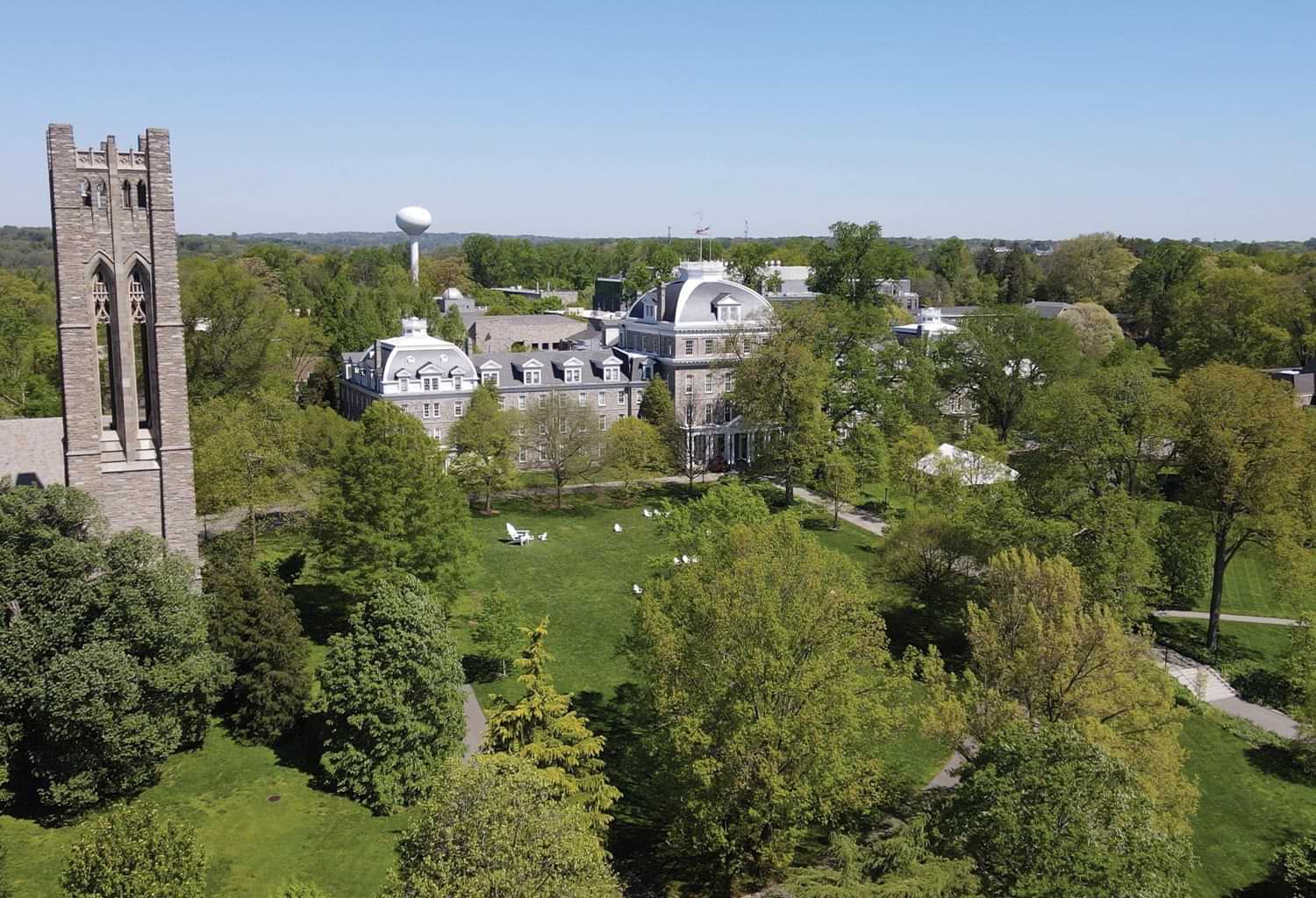
Facing the Past
The team interviewed College faculty and staff to document any knowledge of the holdings of human remains and Indigenous American artifacts.
The result: there is no indication that the remains unearthed by Trotter and his student, Bird T. Baldwin, Class of 1900, are on campus, and there is no evidence that the College held other Native American human remains. It is also not known how long the remains that Trotter took were on campus or where they currently reside. Work to try to answer those questions is ongoing.
Calling the act of collecting of Native American remains “unethical and inexcusable,” Smith said that “none of these facts change the distressing truth that more than 120 years ago and for an unknown period thereafter, these remains were held and displayed here.”
“Learning about this disturbing aspect of the College’s past has been difficult,” says Associate Dean of the Faculty for Academic Programs and Research and Associate Professor of Psychology Cat Norris, who helped conduct the investigation. “But as challenging as this situation is, it’s also been reassuring to see how committed we are to Swarthmore’s mission, which continues to guide our efforts to address the harm this has caused, improve our current practices, and commit ourselves to educating our community more about this and related topics in the future.”
Some of the efforts to repair that harm are already underway.
The College investigation prompted a reevaluation of the Biology Department’s osteology collection overall.
Based on research and practices at the time, the human specimens in the collection were most likely sourced sometime before the 1940s through medical supply companies from marginalized people without their consent. Although the majority had not been used for decades, all human specimens in the collection have now been officially decommissioned.
A collegewide, comprehensive review is also necessary to better understand the College’s holdings. A new audit committee will conduct such a review to ensure the College is not in possession of anything it should not have.
Trotter, who taught natural history and biology at Swarthmore for nearly 40 years, lent his name to a new wing of then-Science Hall in 1920. He retired in 1926 and died in 1931. When Biology moved to Martin Hall six years later, the building was named for him.
In addition to the historical evidence regarding Trotter’s activities in the excavation of a Native American burial site and the collection and display of human remains at Swarthmore, Trotter wrote on racial hierarchy and promoted the nefarious belief that some races are superior to others. Given these facts, Smith stated in her message that a process to reexamine the name of Trotter Hall will be developed. Smith is also committed to finding opportunities in the next academic year to discuss and continue to reflect on these and related topics.
“As a community of thinkers, learners, and doers,” Smith said, “together we will shape a future aligned with our mission and our shared commitment to building a better Swarthmore and a more just world.”
— ALISA GIARDINELLI
HONORARY DEGREES AWARDED
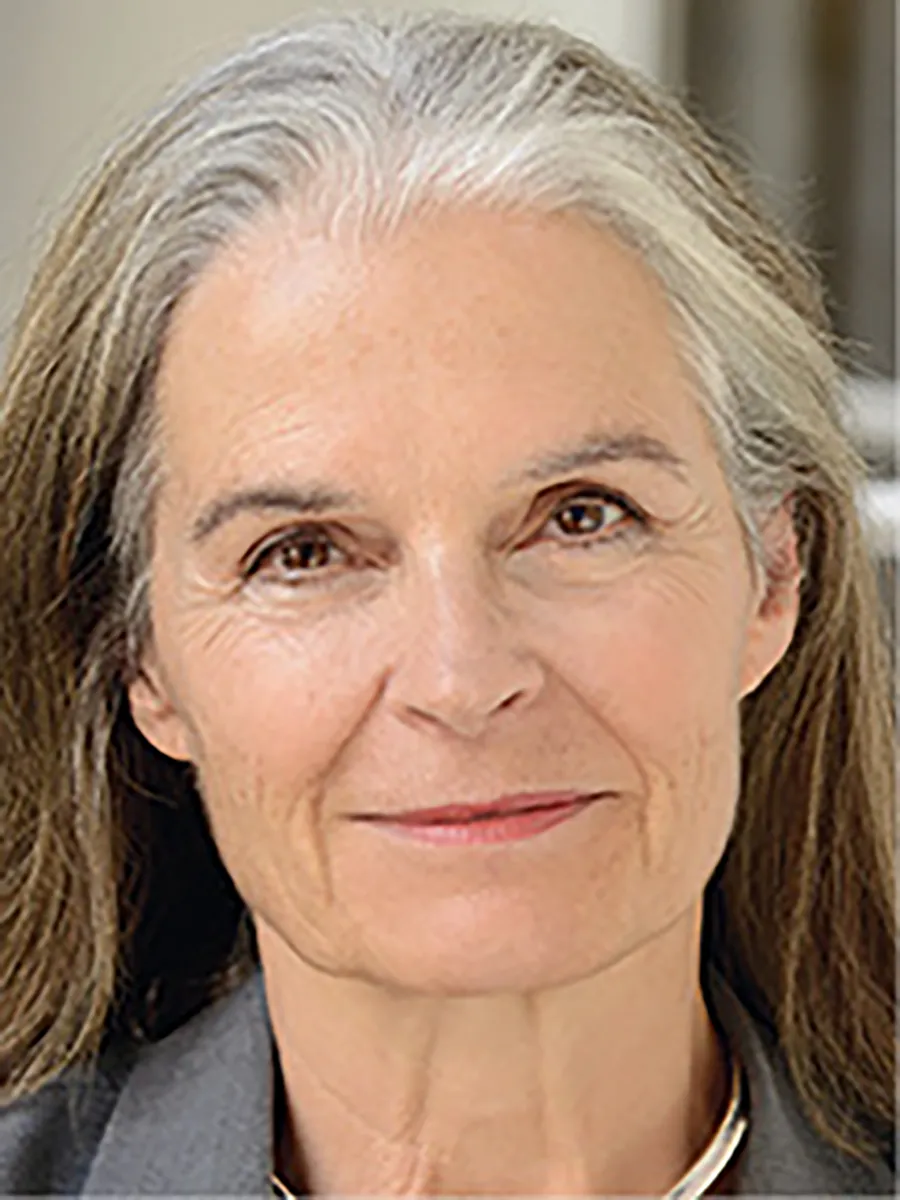
She is an advocate for using architectural design to foster community and positively impact the urban and natural environment.
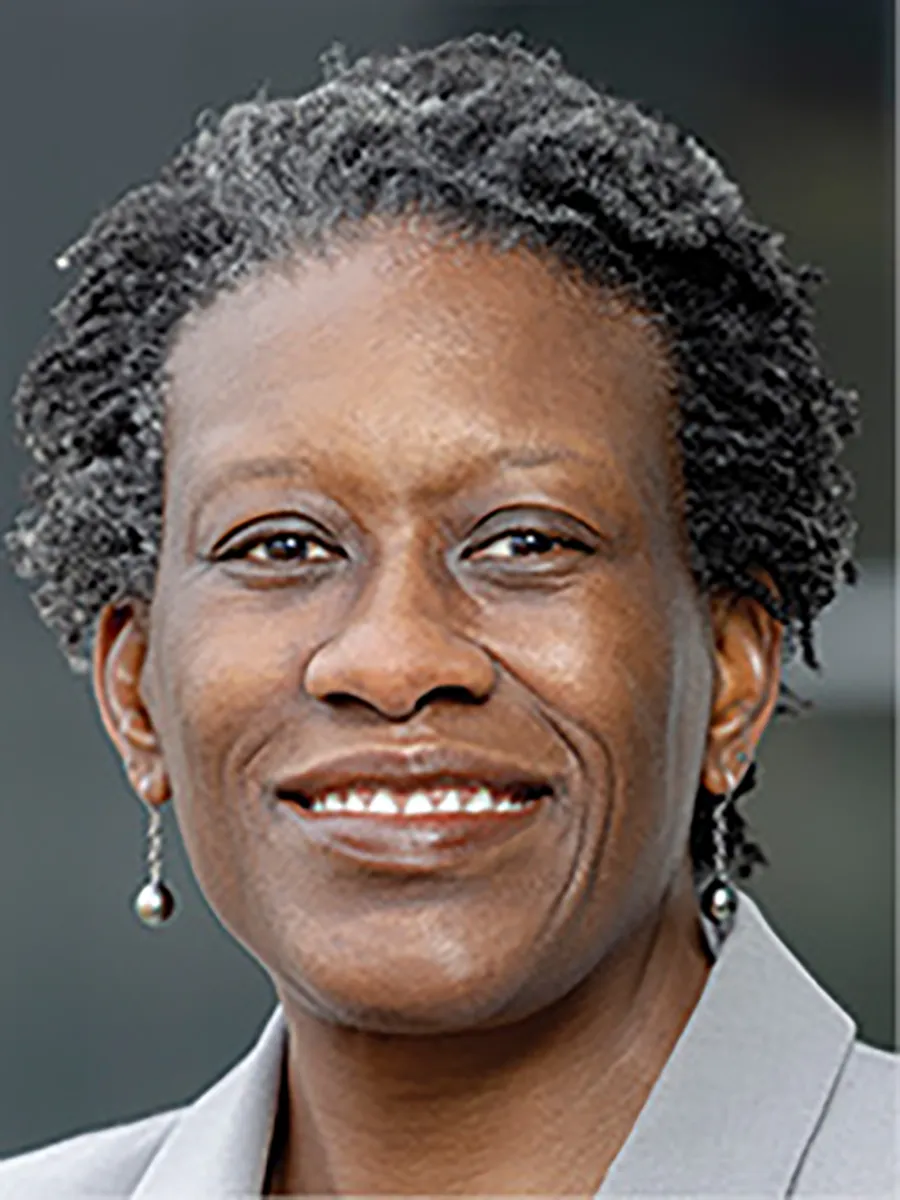
Karama Neal ’93 has dedicated her career to promoting equity and opportunity for underserved communities, focusing on improving the lives of those who live in rural America.
She currently serves as an administrator for the Rural Business-Cooperative Service within the U.S. Department of Agriculture, which helps create jobs and support economic development with a particular focus on the bio-based economy, food supply chain, and energy sectors.
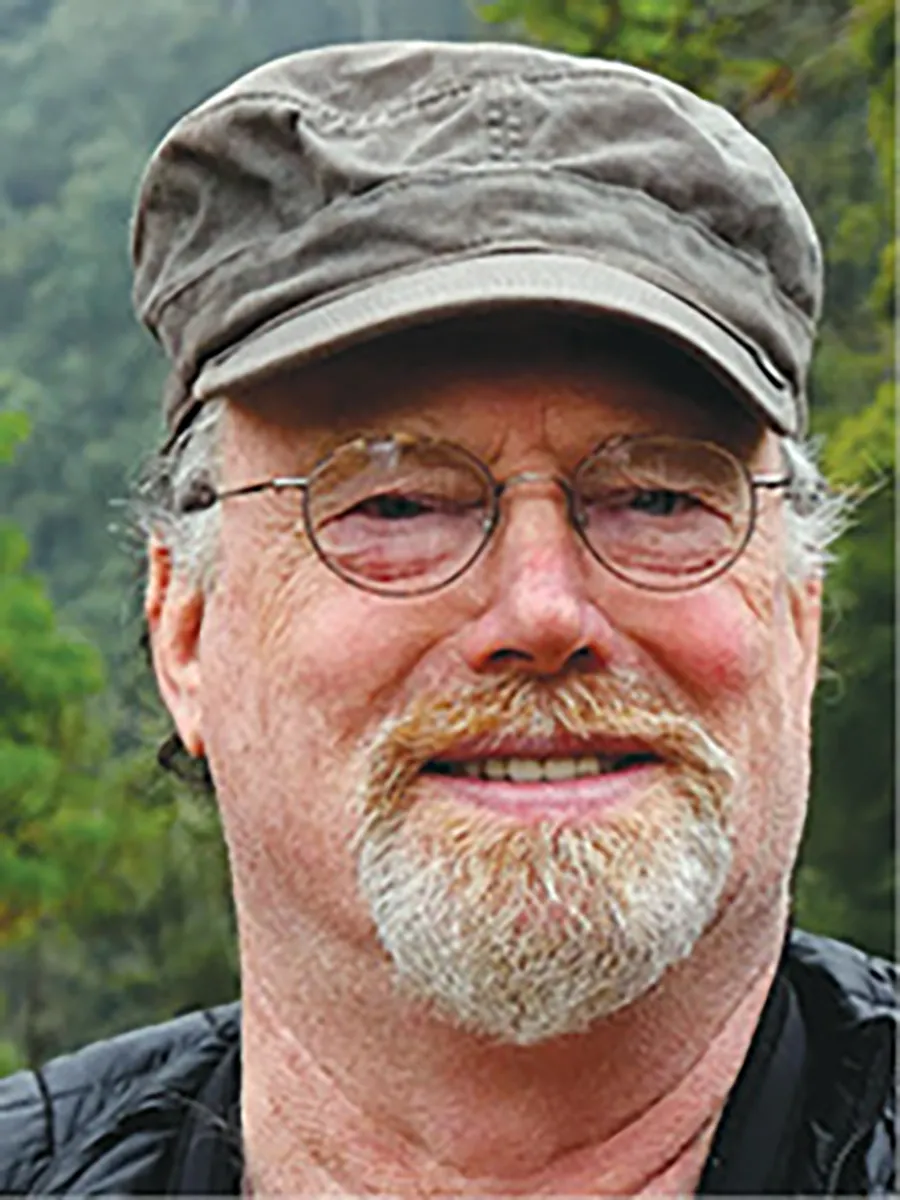
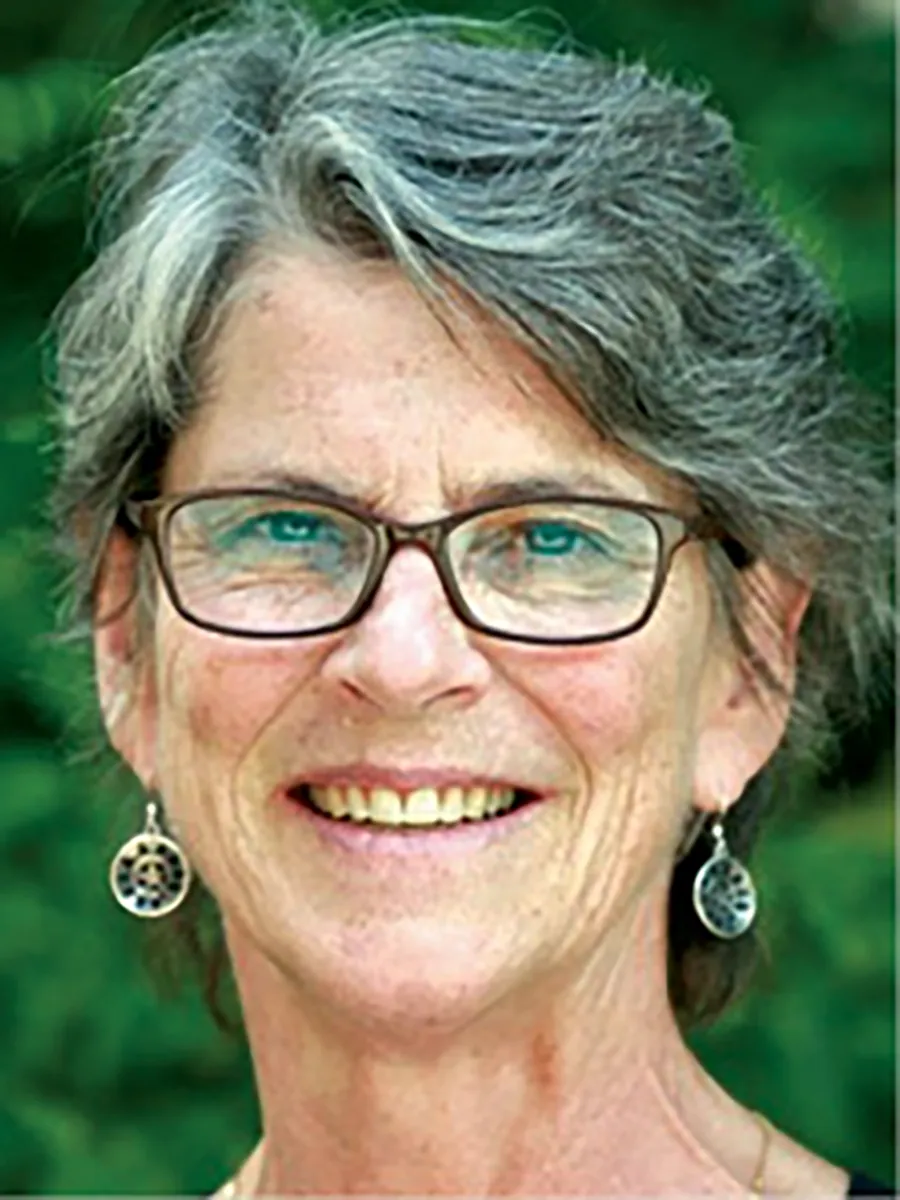
Their work is credited with helping bring mountain gorillas back from the brink of extinction, while also developing the concepts of ecotourism and local benefits as new approaches to supporting conservation.


Their work is credited with helping bring mountain gorillas back from the brink of extinction, while also developing the concepts of ecotourism and local benefits as new approaches to supporting conservation.
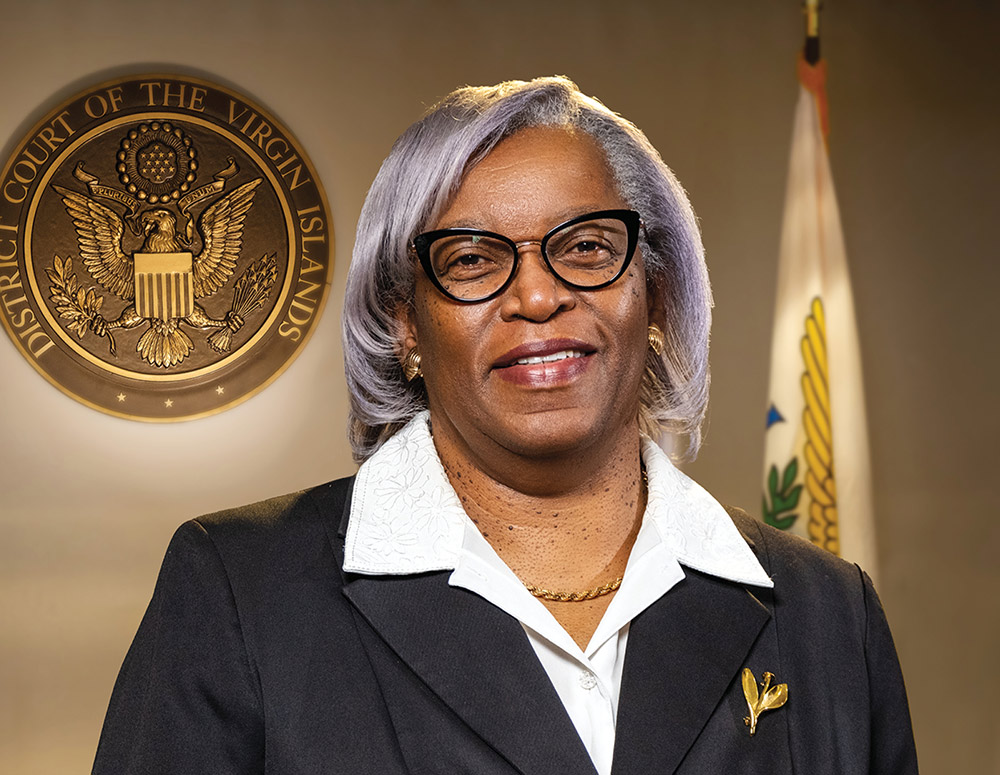
A Public Servant for Justice
She may also have acquired some of her tremendous drive from her parents. In addition to advancing in their federal careers, her parents owned and managed two general merchandise stores and ran a small guest house below their home. Her mother also fashioned funeral wreaths and floral wedding favors. “I didn’t have to look beyond the four corners of my home for the best role models,” says Lewis. “I saw them day to day.”
She fell in love with law as a schoolgirl.
“My godmother was the first female judge in the Virgin Islands,” says Lewis. “The courthouse was just down the block from the Customs and Post Office building. I’d often sit in her courtroom waiting for my parents to get off work.” In the back of the courtroom, Lewis listened carefully to legal cases and analyzed them.
life on the edge
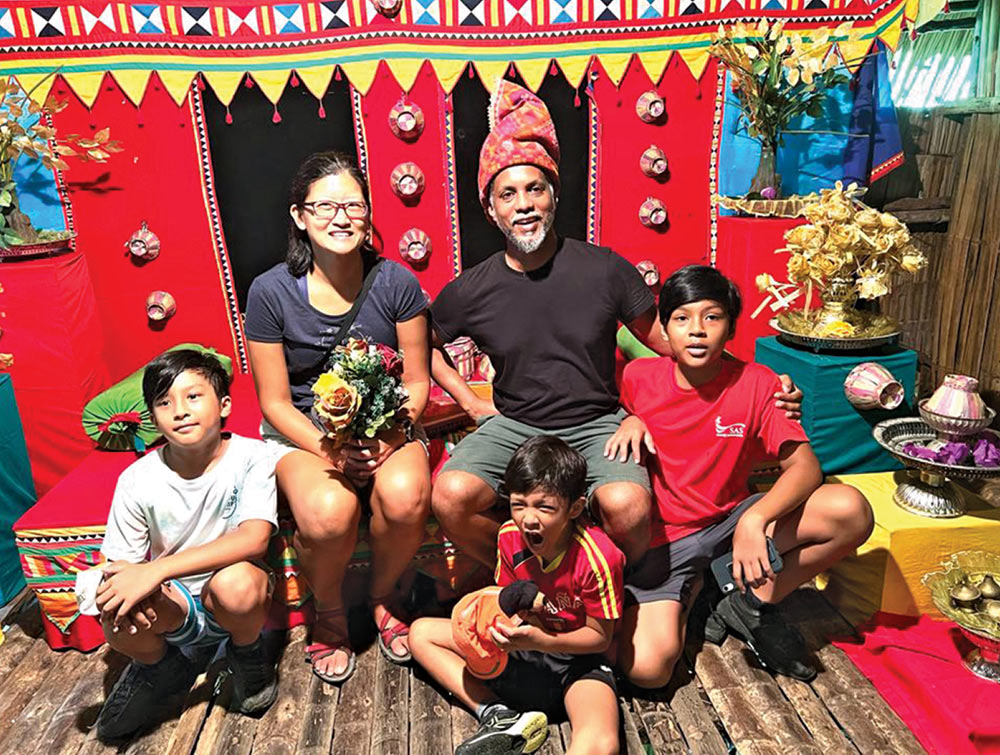
Though plans for his own future had once been hazy, Kulasooriya is now tasked with pursuing society’s big questions about the future as it relates to commerce and technology.
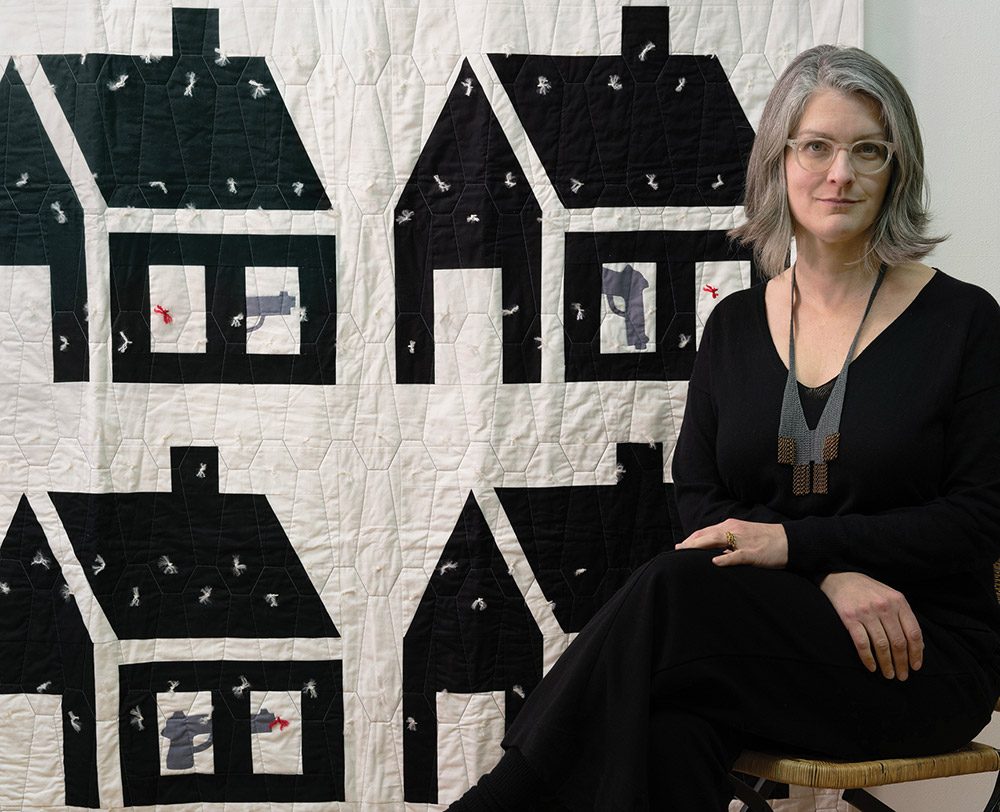
Piecing Her Message Together
But her award-winning creative and critical work, calling for a confrontation with America’s culture of guns, violence, fear, and loss, comes from a different part of Deise’s life.
Her medium is quilting.
A delicate, tough, and time-intensive textile art, quilting is deeply associated with American female creativity. In 2022, the Modern Quilt Guild awarded First Place for Handwork to her American Album Quilt (2018). The project is profiled in Quilt out Loud: Activism, Language, and the Art of Quilting, out this year from C&T Publishing, as exemplary “Text without Letters.”
School shootings and other indiscriminate murders of innocent civilians in public places grab headlines and the public’s attention, Deise says. “Yet the majority of mass shootings on United States soil — 57% — are domestic incidents,” she says. “And women and children are the most frequent victims.
I Was There!
Alumni look back on memorable, loud, live performances over the decades. Concerts by some legendary acts before they became famous shaped the experiences of those who were there.
by Ryan Dougherty

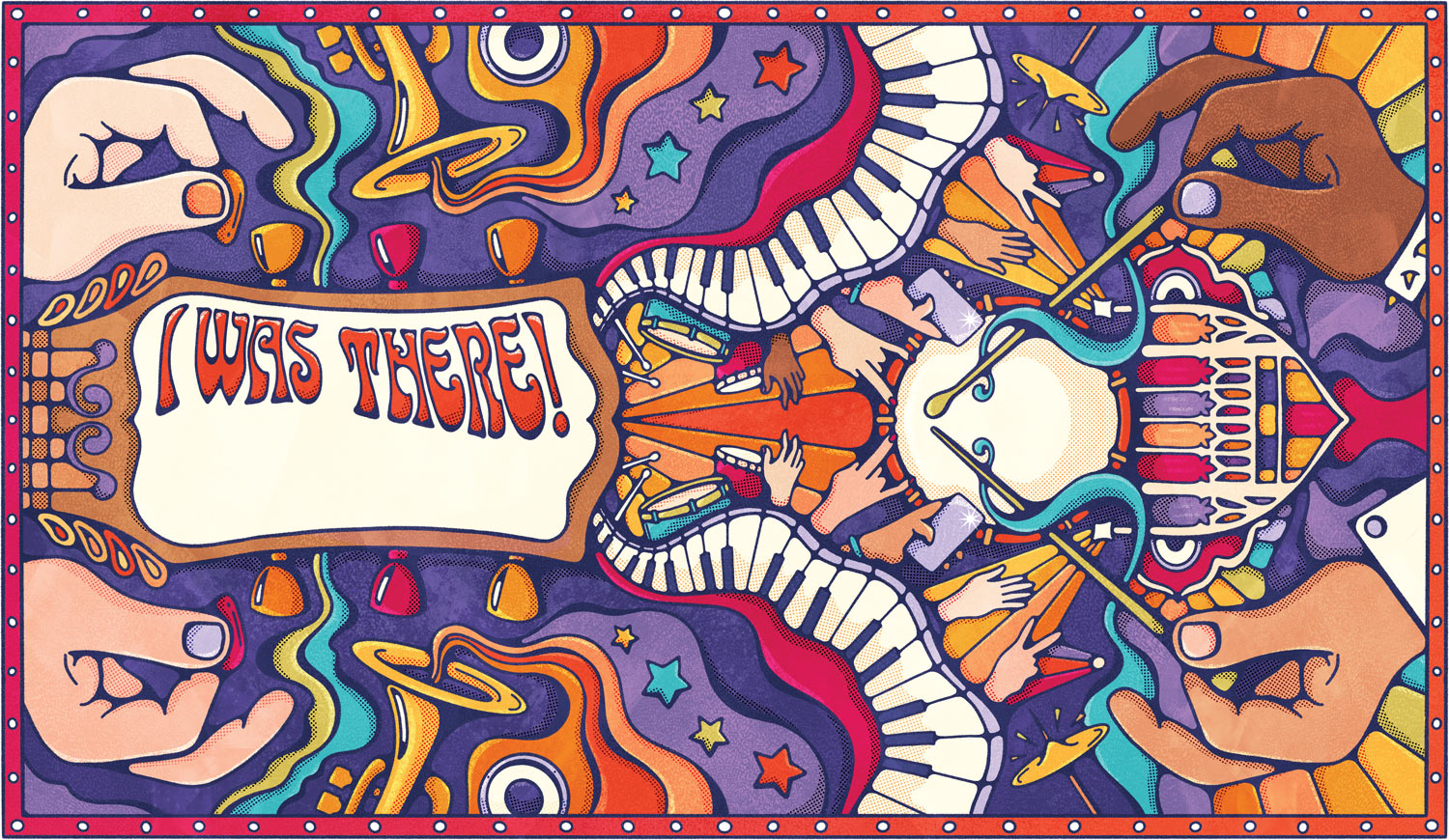
I Was There!
Alumni look back on memorable, loud, live performances over the decades. Concerts by some legendary acts before they became famous shaped the experiences of those who were there.
by Ryan Dougherty


“The stage might have been eight square feet crowded into the eastern end of the first floor; the band completely filled it,” remembers Beams. “ [They were supposed to be] the opening act, but played a long set.
“I’ve never seen anything like it,” he says.
For Dave Scheiber ’76, the “magical moment” happened in the Scott Outdoor Amphitheater, as he and his friends were introduced to a sly, fedora-wearing dynamo.
“We knew nothing about [Bruce Springsteen], but it was a beautiful, balmy April afternoon, and a free show, so we went,” he says. “And from the instant the band took the stage, we knew we were experiencing a show unlike any we’d ever seen.”
Forty years later, all the way across campus in the Fieldhouse, Sean Anthony Bryant ’13 had his moment, watching Big Boi, half of the chart-topping rap duo Outkast, electrify a capacity crowd.
“He brought me and a handful of other Swatties on stage. It was awesome!” recalls Bryant, who later got backstage to take photos. “A night I’ll never forget.”
Silent No Longer

The station had been silent for over a year, and the space was in chaos. Posters drooped off the walls, hanging by a single corner. Scattered across the floor were nails and fallen chunks of plaster. “It was a mess,” says Wehar. “But it was beautiful.”
Borrego and Wehar were surrounded by the remnants of a rich heritage. Vintage audio equipment was piled on the shelves, gathering dust. A library of 10,000 vinyl records, including rarities from the 1940s, lined the walls. Fascinated, Wehar removed a couple. He noticed that the sleeves were covered in witty and irreverent scrawls from long-ago student DJs.
Spider Senses
rowing up in Joppatown, Md., Anne Danielson-Francois ’90 led neighborhood children on backyard tours to find worms and salamanders.
When she was 10, she had a pet tarantula named Dracula. And as a teenage summer camp counselor, part of her job involved squashing spiders who snuck into tents. But more often than not, she gently wrangled them out.
Spiders scare people, says Danielson-Francois. She works to change that notion. Now an associate professor of biology at the University of Michigan-Dearborn, she makes it her mission to educate students and the public about the eight-legged creatures dwelling in dark corners of our homes — and minds.
“I think the only way you can get a love of spiders is to encounter them and see their beautiful webs and watch them eating mosquitoes,” says Danielson-Francois, whose views have appeared in USA Today, The New York Times, Parade, and CNN.
Walking Martha
by John Freeman ’96
lready the time has begun to fade, but if I pause in my day I can remember how it felt.
Leaving the house in the gloomy dark, driving to the Common with Martha in the back seat. Watchful, whimpering with impatience. Barking if we took a wrong turn. At the entrance to the park, other dog owners unloaded their animals with tenderness, or long-suffering abasement.
I often saw two men in particular, washing the paws of their spaniels with tiny portable spray guns before lifting their dogs, pasha-like, into the boot of a sensible hatchback.
This was absurd, wasn’t it? Carrying our animals to a wild-seeming but constructed woodland for an hour each day, picking up their excrement with our hands, cleaning them like penitents, as if this tiny reversal in our dominance over nature was a stay against what may one day come.
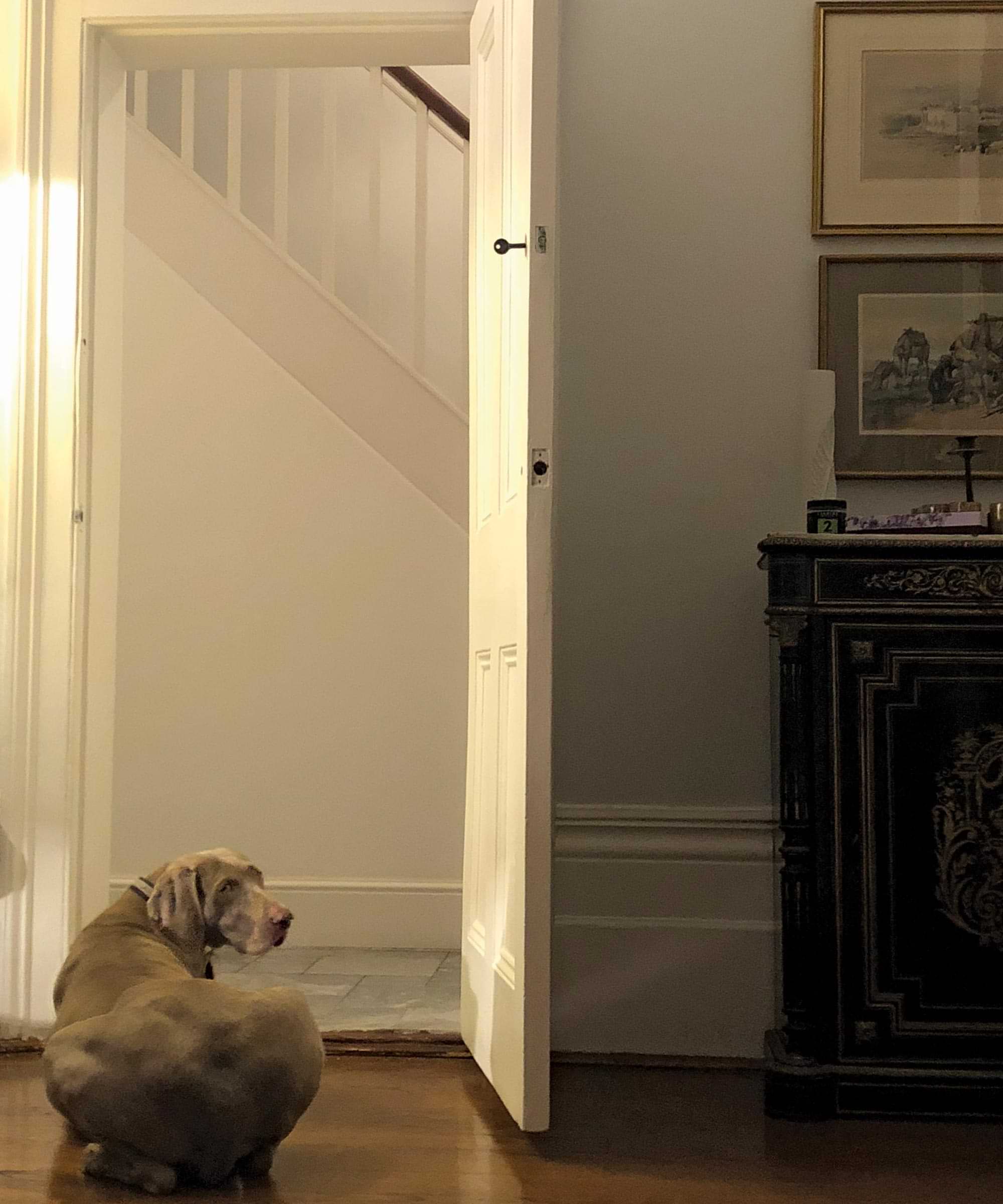
Walking Martha
by John Freeman ’96
lready the time has begun to fade, but if I pause in my day I can remember how it felt.
Leaving the house in the gloomy dark, driving to the Common with Martha in the back seat. Watchful, whimpering with impatience. Barking if we took a wrong turn. At the entrance to the park, other dog owners unloaded their animals with tenderness, or long-suffering abasement.
I often saw two men in particular, washing the paws of their spaniels with tiny portable spray guns before lifting their dogs, pasha-like, into the boot of a sensible hatchback.
This was absurd, wasn’t it? Carrying our animals to a wild-seeming but constructed woodland for an hour each day, picking up their excrement with our hands, cleaning them like penitents, as if this tiny reversal in our dominance over nature was a stay against what may one day come.

Forever Trending
by Bayliss Wagner ’21
f you’re on TikTok or any other social media platform, there’s a very good chance that you’ve heard “It’s Corn,” a musical mashup that turns a little boy’s remarks on corn cobs into song and his enthusiastic chomps into percussion. The video has more than 28 million views on YouTube and has been used in well over a million TikTok videos, as well as posts from brands like United Airlines, Dunkin’ Donuts, and Chips Ahoy!.
What you may not have heard: The quartet behind “It’s Corn” — and a number of other viral hits — includes two Swarthmore graduates, Evan Gregory ’01 and Andrew Rose Gregory ’04.
class notes

Garnet Weekend
Oct. 6–7
Celebrate what makes Swarthmore special during our annual Homecoming and Family Weekend. swarthmore.edu/GarnetWeekend
Become a MEMBER OF THE Young Alumni Ambassadors Program (YAAP)
YAAP formed in partnership with the College to provide a supportive network, resources, and opportunities to help recent Swarthmore grads stay connected. Fill out our interest form to learn more and attend one of our monthly virtual meetings!
bit.ly/yaapapp
Alumni Events Website
Stay up to date with Swarthmore events by visiting our new Alumni Events webpage. Find information about and links to register for upcoming in-person and virtual events, as well as recordings and photo galleries of past programs. swarthmore.edu/AlumniEvents

Your support makes a Swarthmore education extraordinary and accessible.
Your support makes a Swarthmore education extraordinary and accessible.
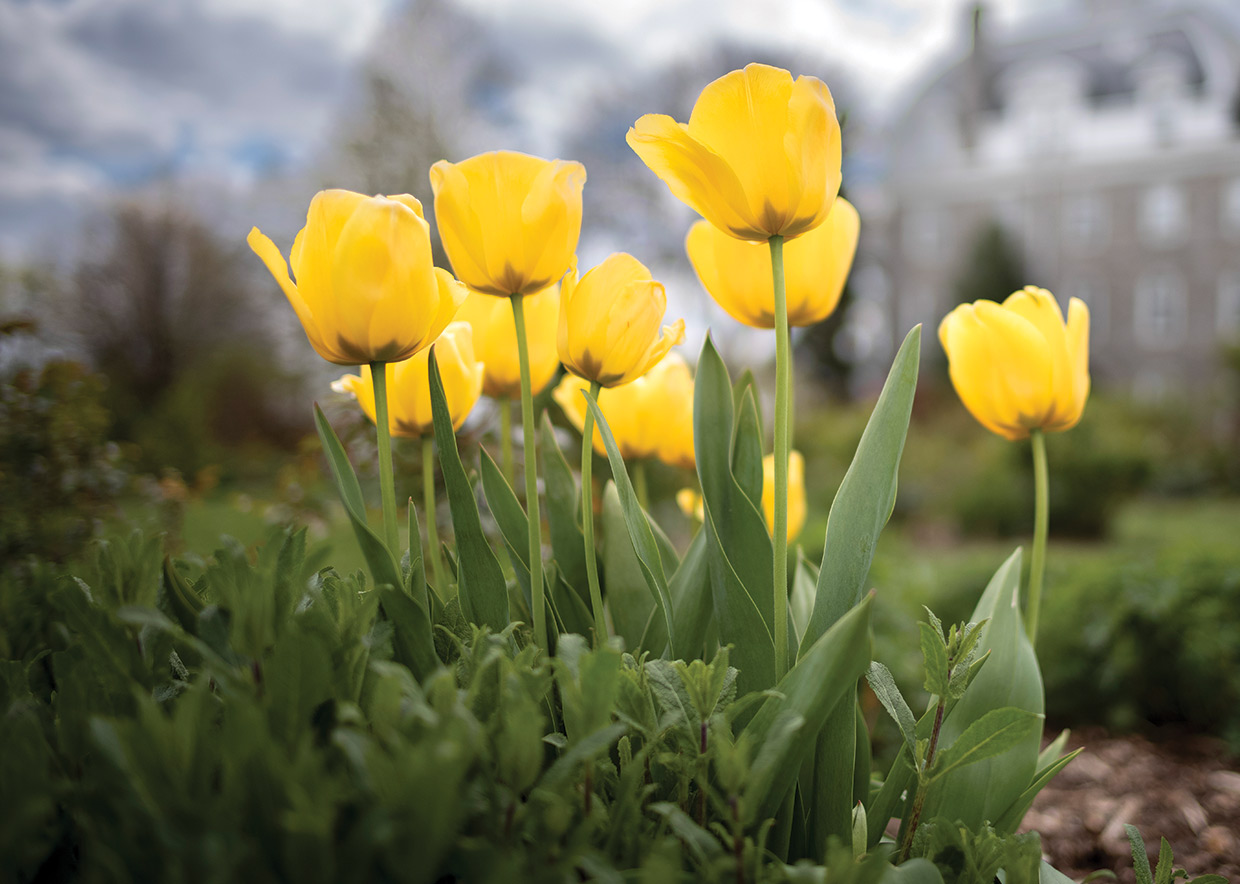
their light lives on
John, an accountant and deacon, died Dec. 26, 2022.
He served as a meteorologist on the USS Essex aircraft carrier, earned eight battle stars, was admitted into the Navy officers’ candidate program, and attended Princeton University, Swarthmore, and the University of Pennsylvania. John earned his accounting degree at the University of Richmond, retired from Reynolds Metals Co. after 41 years, and served for many years as deacon, adult Sunday school teacher, and chair of numerous committees at Bon Air Baptist Church.
Lois, a painter, volunteer, and Unitarian Universalist, died Nov. 27, 2022.
She attended Yale for a year after earning her history degree at Swarthmore, and moved with her late husband, Sandy, to Massachusetts where he taught at MIT. They raised their children and were involved in local politics and the Unitarian church. Following Sandy’s passing, Lois remained in Henniker, N.H., where they’d retired, serving on the regional planning commission before moving in 1992 to Havenwood Heritage Heights in Concord, N.H.
Betsy, a psychiatrist with an interest in performing arts, died Aug. 27, 2022.
After earning her biology degree at Swarthmore, where she was a member of the Drama Board, College Dancers, and Studio Art Group, Betsy earned her master’s and medical degree in 1944 from the University of Chicago. In 1974, she earned a master’s of public health from the University of Hawaii–Manoa, and later retired as a psychiatrist for Hawaii’s Department of Human Services.
Mary, a remedial reading teacher, died Jan. 23, 2023.
A graduate and lifelong supporter of Swarthmore, she earned a Ph.D. in education from Temple University and taught remedial reading in Philadelphia before moving to New York City with her late husband, Kurt, a businessman, art dealer, and artist. Mary was his able assistant, becoming knowledgeable about African, European Renaissance, and early 20th-century art, and moving to Baltimore in 2009 to be closer to family.
Mentor Robert, a surgeon and medical volunteer, died July 15, 2022
As part of the Navy’s V-12 program during WWII, he attended Haverford and Swarthmore colleges, Ohio State University, and Jefferson Medical College, and while a surgical resident participated in the first successful open-heart surgery using the heart-and-lung machine. Robert practiced surgery for more than 30 years and was instrumental in founding the burn unit at Miami Valley Hospital in Dayton, Ohio. Upon retirement, he volunteered overseas, including 10 years in China where he helped build a surgical residency program.
looking back
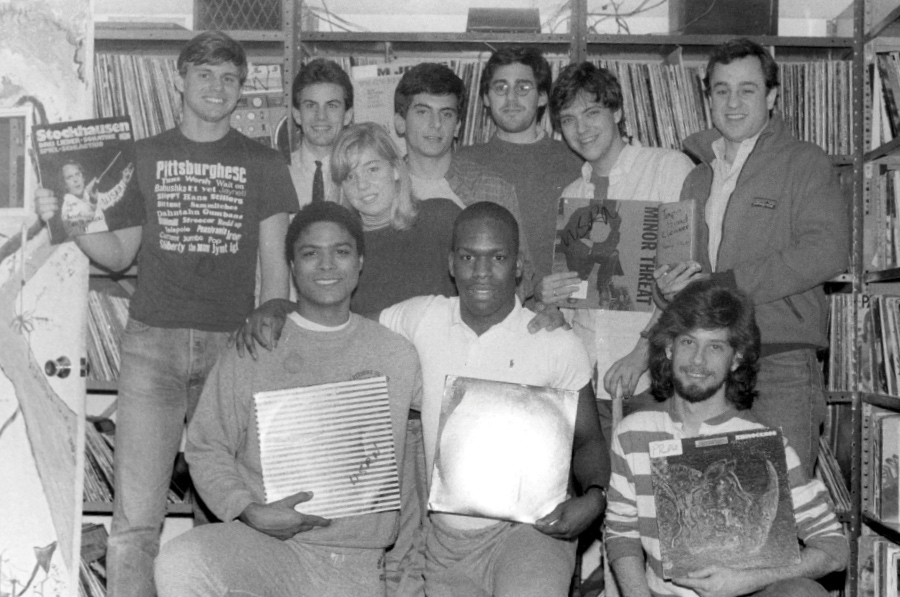
Tracy Korman ’86 is one half of a Matchbox couple with WSRN origins.
“I asked my crush to help me out with one of my graveyard shift shows,” he recalls. “She promptly took over my show, as she had much better and more current taste in music,” he says. “We must have made a pretty good team, as Joan Hsiao ’86 and I have now been married for 33 years this spring.”
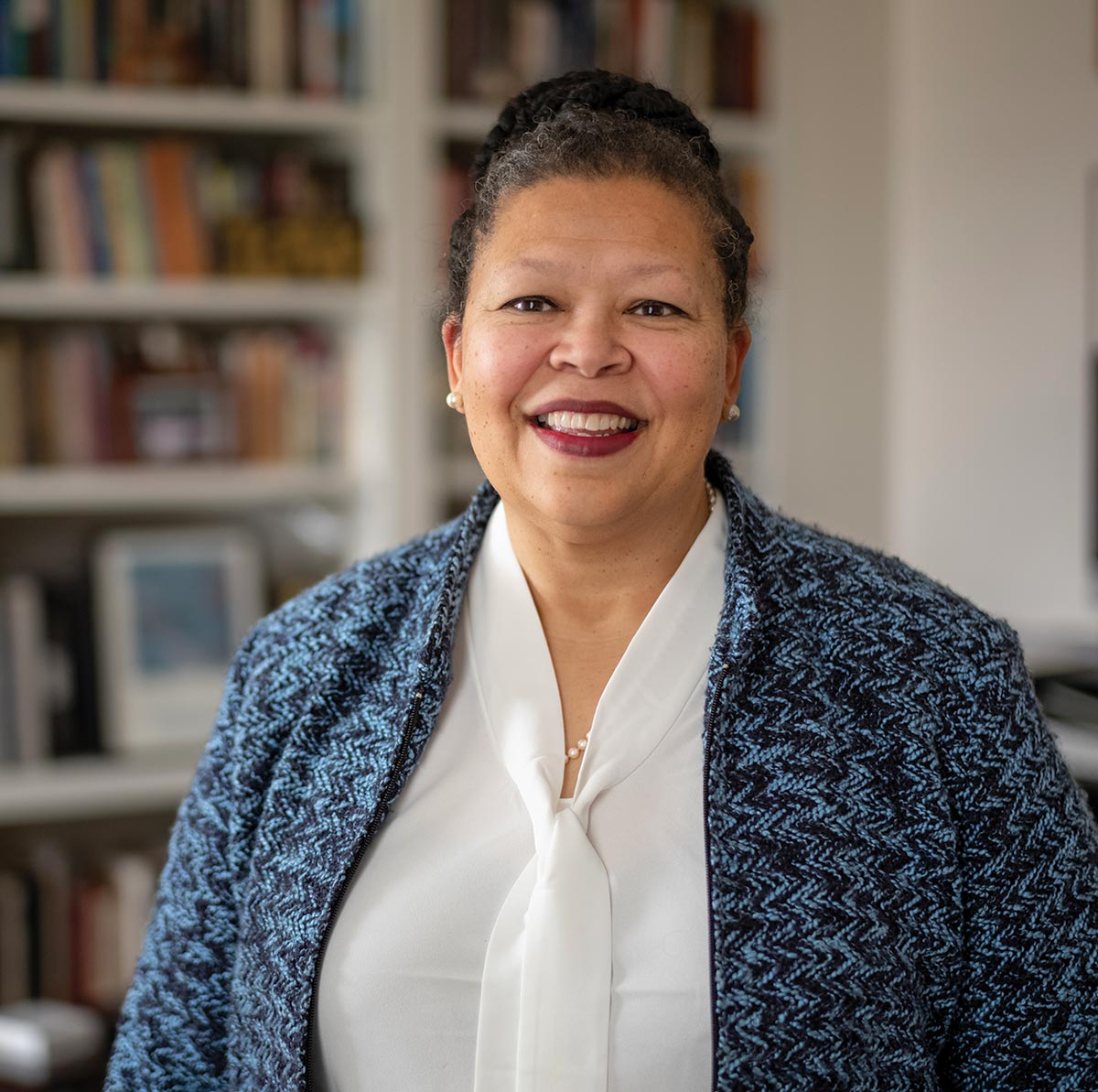
GROWTH AND CHANGE
You’ve been at Swarthmore for 25 years and served as provost for five. What changes have been most notable?
Watching the student body, administrative staff, and faculty become much more diverse has been pretty extraordinary. There are a lot more people of color on campus now then when I got here.

A SEASON TO CELEBRATE
Swarthmore’s Vinny DeAngelo ’24
was named Player of the Year
Back cover
INVEST IN THE NEXT GENERATION
Back cover
INVEST IN THE NEXT GENERATION


